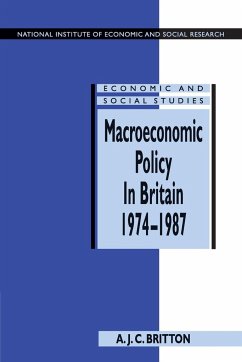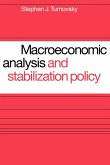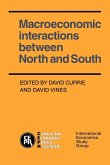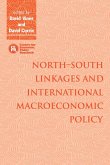This book is a survey of macroeconomic policy in Britain in the 1970s and 1980s, a subject at the centre both of political debate, and professional controversy, and argues that there were important elements of continuity in the way decisions were actually taken year-by-year and month-by-month in the Treasury and the Bank of England in this period. It is written by Andrew Britton, the director of the National Institute of Economic and Social Research, and previously a senior economist at the Treasury, and is a sequel to the NIESR studies by Christopher Dow, (1945-1960), and by Frank Blackaby and others (1960-74). Part One is a chronological account of policy actions and their setting. Part Two provides a history of ideas, describing the most influential writings of economists in Britain during this period, while Part Three looks at the influence of the world economy on Britain. Parts Four and Five include several elements of new statistical analysis concerning the way in which policy instruments were used, in particular the signals to which policymakers reacted when setting interest rates. The effects of policy actions are estimated using the Institute's macroeconomic model. Amongst the other issues addressed are: the consequences of floating exchange rates; the reasons for the upward trend in unemployment; the relationship between money and prices; and the effects of fiscal and monetary policy on the growth potential of the economy. A full calender of events and an annotated bibliography are included as further aids to the reader.
Table of contents:
List of tables; List of charts; Preface; 1. Introduction; Part I. Narrative of Events: 2. Prelude: the last years of the health government; 3. The labour government 1974-9; 4. The conservative government 1979-83; 5. Conservative government continued 1983-January 1985; Part II. History Of Ideas: 6. The seventies, developments of keynesianism; 7. The seventies, the monetarist challenge; 8. The eighties, monetarism in practice; 9. The eighties, alternatives to monetarism; Part III. Britain and the World Economy: 10. The world economy 1974-87; 11. The British economy compared with others; Part IV. The Conduct Of Policy: 12. Introductory note on methods of analysis; 13. The conduct of monetary policy; 14. The conduct of fiscal policy; Part V. The Outcome For Policy Objectives: 15. external balance and the exchange rate; 16. Unemployment; 17. Inflation; 18. Output growth; Part VI. Conclusions: 19. Conclusions; Appendix; Charts of main economic indicators; Bibliographic notes; Index.
Table of contents:
List of tables; List of charts; Preface; 1. Introduction; Part I. Narrative of Events: 2. Prelude: the last years of the health government; 3. The labour government 1974-9; 4. The conservative government 1979-83; 5. Conservative government continued 1983-January 1985; Part II. History Of Ideas: 6. The seventies, developments of keynesianism; 7. The seventies, the monetarist challenge; 8. The eighties, monetarism in practice; 9. The eighties, alternatives to monetarism; Part III. Britain and the World Economy: 10. The world economy 1974-87; 11. The British economy compared with others; Part IV. The Conduct Of Policy: 12. Introductory note on methods of analysis; 13. The conduct of monetary policy; 14. The conduct of fiscal policy; Part V. The Outcome For Policy Objectives: 15. external balance and the exchange rate; 16. Unemployment; 17. Inflation; 18. Output growth; Part VI. Conclusions: 19. Conclusions; Appendix; Charts of main economic indicators; Bibliographic notes; Index.








